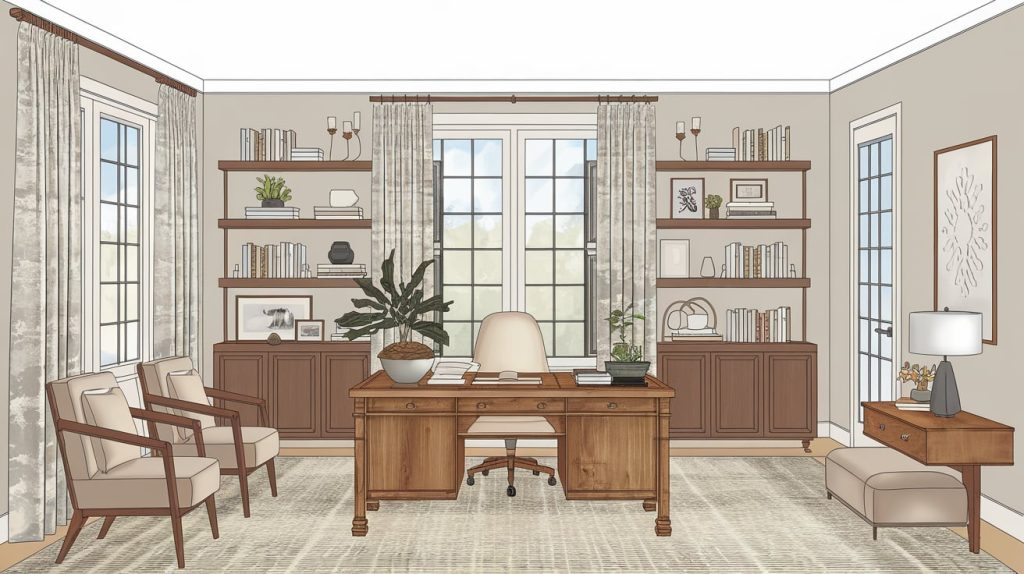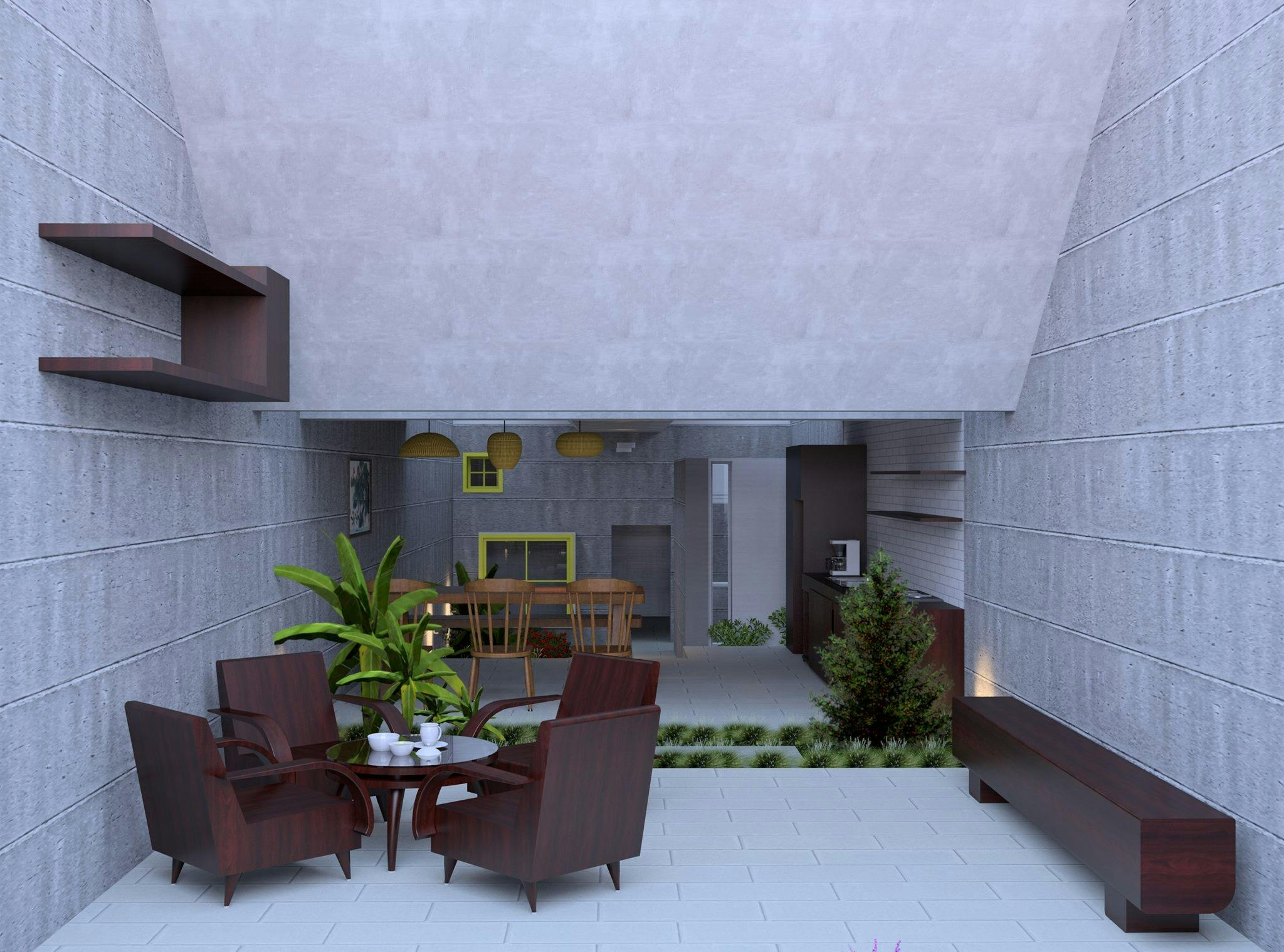Arranging your home’s layout isn’t just about visuals; it’s the foundation of a comfortable, functional living space.
Poor layouts create daily frustrations, while thoughtful room planning transforms your home experience. You know how to create spaces that not only look beautiful but also support your lifestyle and reduce stress.
In this blog, we’ll study room-by-room layout essentials, including creating conversation-friendly living rooms with clear focal points, designing bedrooms that promote restful sleep, arranging dining spaces for comfortable meals, and setting up productive home offices.
We’ll also utilize proven solutions to tackle challenging spaces, such as long, narrow rooms and L-shaped areas.
Whether you’re rearranging existing furniture or planning a new space, these principles will help create rooms that truly feel like home.
Why Room Layout Matters?
Room layout plays a key role in how we feel in our homes. A good design helps us utilize space more effectively, makes rooms function well for daily tasks, and brings a sense of calm to our living areas.
When you plan your room with care, you get many good results.
Your home starts to feel just right. You can move around with ease. Things are where they need to be. The space feels balanced and calm. A well-planned room helps us in many ways.
It lets people walk through without bumps, gives us spots for rest, work, and fun, and helps us feel at home.
The right layout also makes small rooms seem bigger, helps big rooms feel cozy, puts things within reach, and creates a pleasing appearance.
Good layouts aren’t just about looks. They help us live better, save time, and cut stress. They make our homes work for us, not against us.
Room-by-Room Functional Layouts
With these expert layout tips, you can learn how to arrange each room in your home for maximum comfort, style, and functionality.
1. Living Room Layout
The living room is often the focal point of your home. Begin by identifying a focal point, such as a window with a view, a TV, or a piece of art.
Arrange your sofa to face this focal point and position chairs so that people can see both the focal point and each other.
This fosters a balanced and inviting atmosphere. Place a coffee table within reach of all seats, ensuring it’s easily accessible but not overly large. Keep pathways clear to allow for smooth movement around the space.
The TV should be set at the right height; ideally, the center of the screen should be at eye level while seated.
For comfortable viewing, ensure a proper distance between the TV and seating. Add task lighting near seating to enhance functionality for reading and other activities.
Finally, choose furniture that fits the room size. For small spaces, consider a loveseat; for larger rooms, consider using rugs to define different zones.
2. Bedroom Layout
The bed should be the first item you place in the bedroom. Position it against a solid wall, avoiding windows or direct alignment with the door, as this promotes a sense of security.
Aim to place the bed so you can see the door or a pleasant view for added peace of mind. Place small tables on either side of the bed for easy access to essentials, such as lamps, books, or glasses.
Allow for space to walk around three sides of the bed to make daily tasks easier.
Ensure there’s enough room for dressers or other storage without interfering with the bed’s placement.
A small night light near the bed can help guide you during nighttime trips to the bathroom. If the room allows, consider adding a chair or bench for sitting while dressing and additional storage.
3. Dining Room Layout
The dining room centers around the table, which should be positioned in the middle of the room for easy access.
Hang a light fixture directly above the table to provide focused illumination and designate the space as the dining area.
Ensure there’s enough room behind chairs to allow easy movement; approximately 24 inches is ideal. The space between chairs should provide comfortable seating, typically 24 inches per person.
Create clear pathways to and from the kitchen for easy access during meal prep. A rug under the table can help define the dining area, ensuring it is large enough to accommodate chairs when they are pulled out.
If space allows, consider adding a sideboard or buffet for additional storage and convenience.
4. Home Office Layout

The home office should strike a balance between comfort and focus. Start by positioning your desk near a window to maximize the use of natural light. Be mindful of glare and adjust the desk angle to minimize it.
Choose a desk orientation that suits your preference. Some people prefer facing the door for awareness, while others prefer a wall for fewer distractions.
Ensure your chair and desk are at the correct height: your feet should be flat on the floor, and your arms should be at a 90-degree angle when typing.
Keep frequently used items within easy reach to maintain workflow, and ensure that outlets are accessible for your electronic devices.
Leave enough space behind the chair to allow movement without obstruction. Add task lighting for the desk area to reduce eye strain, especially in the evening or on cloudy days.
Simple Guidelines for Room Dimensions
Different rooms need different amounts of space. Use these basic guidelines as you plan
| Room Type | Minimum Size (sq ft) | Comfortable Size (sq ft) | Purpose |
|---|---|---|---|
| Bedroom | 70 | 120-150 | Sleep, dress, relax |
| Living Room | 120 | 200-300 | Gather, entertain |
| Dining Room | 80 | 120-150 | Eat meals |
| Office | 5 | 100-150 | Work, study |
Furniture Placement for a Harmonious Home
- Floating Furniture – Pull items away from walls to create more social and visually pleasing spaces.
- Diagonal Placement – Try placing one or two pieces at angles to add interest and break up the grid-like appearance of rooms.
- Symmetry vs. Asymmetry – Matching pairs create formal, calm settings, while mixed arrangements evoke a more relaxed and modern feel.
- Negative Space – Leave some empty areas around furniture groups to avoid crowded rooms and help each piece stand out.
Conclusion
Room layout is more than just placing furniture. It’s about creating spaces that support your lifestyle.
Good planning ensures that each room serves its purpose effectively. Start with measurements and room features. Create zones for different activities.
Place furniture carefully to support both function and flow. Consider the special needs of each room type.
Living rooms need social spots, bedrooms call for peace and rest, dining rooms must welcome gatherings, and home offices require focus and order.
Each challenge, whether a long, narrow space, a tiny room, an L-shape, or an open plan, has solutions. When you consider how your rooms work, daily life becomes smoother.
Take time to plan your spaces. The effort pays off in a home that fits your needs and makes each day better.
Frequently Asked Questions
What Is the Most Important First Step in Room Layout?
Measure your space carefully before buying any furniture.
How Much Space Should I Leave Between Furniture Pieces?
Keep at least 3 feet for walkways and 18 inches between seating items.
Can I Put a Bed Under a Window?
Yes, but use thick curtains to block drafts and morning light.
How Do I Make a Small Room Look Bigger?
Use light colors, fewer pieces, and add mirrors to reflect space.











